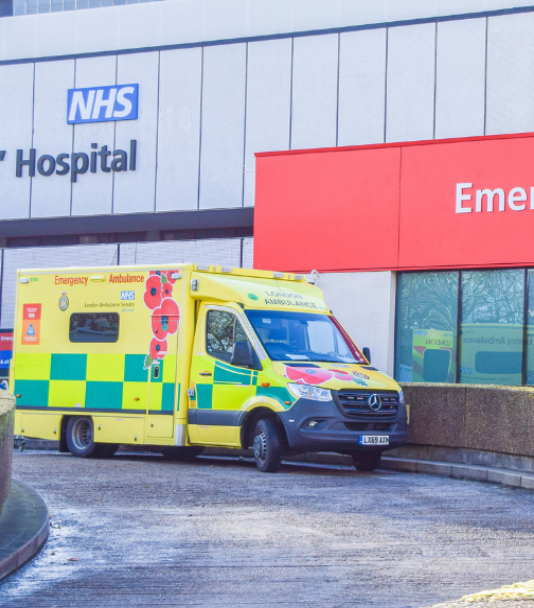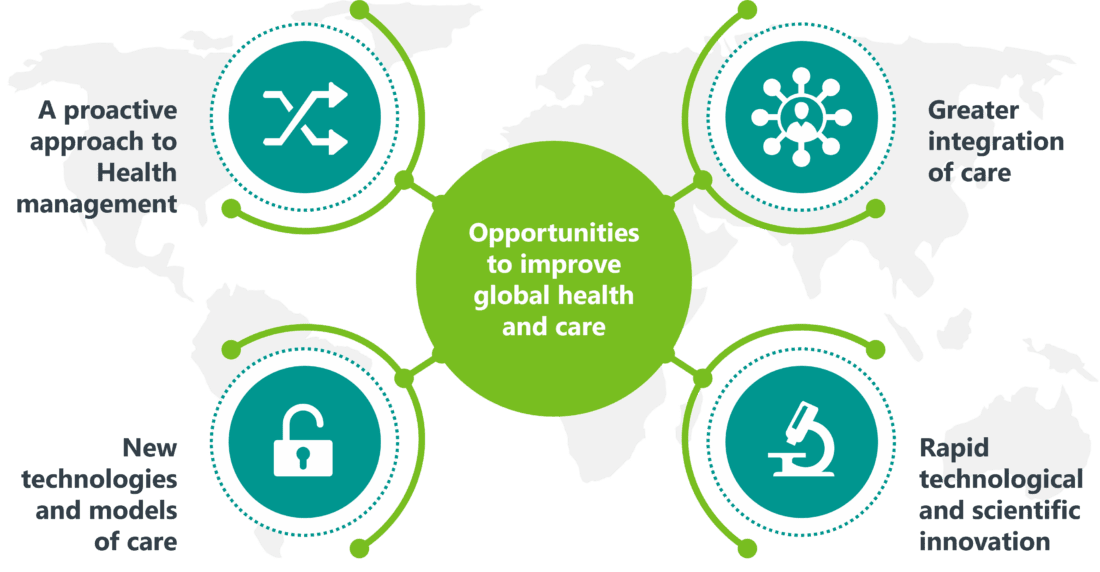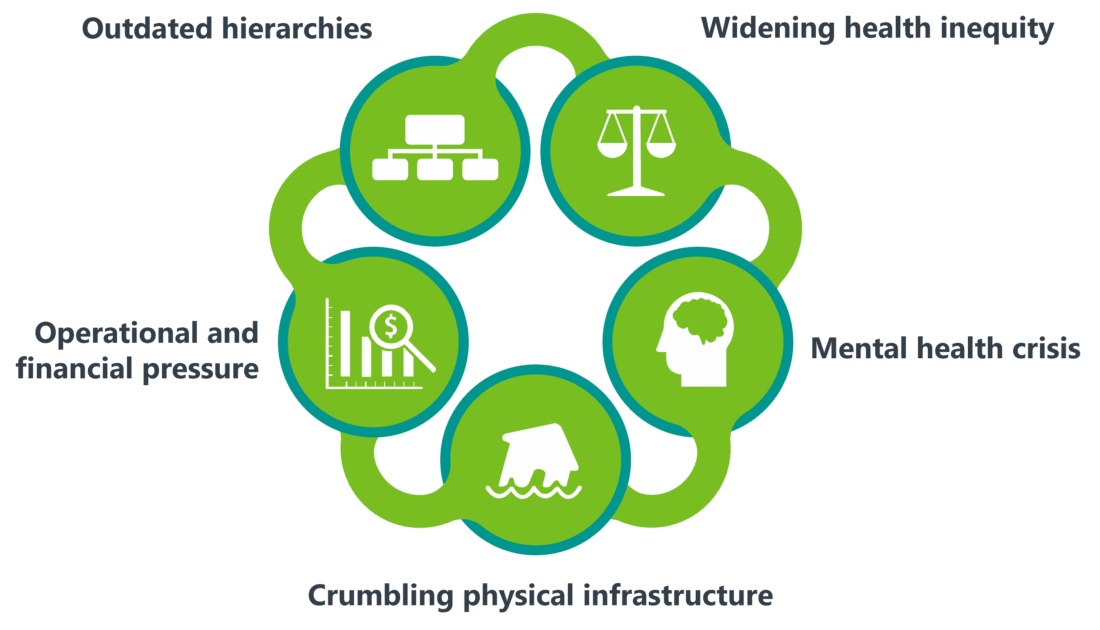
From taking a proactive approach to population health management through considering prevention and the wider determinants of health to greater integration of care, and creating more seamless treatment for patients, there are an abundance of opportunities to improve health outcomes.
Furthermore, new technologies and models of care are pivotal in providing sustainable value to patients, healthcare professionals, and healthcare organisations, and rapid innovation (including the rise of AI) are propelling forward the development of treatments, equipment, and diagnostics, heralding the era of personalised medicine.


While the opportunity has never been greater, it has never felt more difficult to take advantage of it. Service providers’ ability to respond is hampered by the pressure of budget cuts (and short-term budget cycles) and capacity crises.
Outdated hierarchies are slow to adapt to change unless in a crisis. The blockers to change are severe but these are challenges our healthcare consultants can help you overcome. However, this begs the question; how can health systems shape the future of care while managing the daily onslaught?
Our healthcare consultants’ approach to designing services is about:
Our two common strands of work in this space are:
Strategy development
Aligning clinicians, managers and patients around the future of care. What does their health system need to look like in 10 years’ time? How will system-working need to reshaped services? What technology will be needed to transform care? We use our proprietary toolset to ensure your strategy can leave PowerPoint behind and activate people across your organisation to pull in a common direction.
Service design
Using patient-pathway mapping and patient experience design to develop a clear picture of the future state of care, engage staff and patients, and envision technological needs. Our simple but comprehensive process ensures that future-state patient pathways, once designed, provide a blueprint for transformation and a clear, prioritised digital roadmap.
Our healthcare consultants’ approach to designing services is about:
Our two common strands of work in this space are:
Strategy development
Aligning clinicians, managers and patients around the future of care. What does their health system need to look like in 10 years’ time? How will system-working need to reshaped services? What technology will be needed to transform care? We use our proprietary toolset to ensure your strategy can leave PowerPoint behind and activate people across your organisation to pull in a common direction.
Service design
Using patient-pathway mapping and patient experience design to develop a clear picture of the future state of care, engage staff and patients, and envision technological needs. Our simple but comprehensive process ensures that future-state patient pathways, once designed, provide a blueprint for transformation and a clear, prioritised digital roadmap.